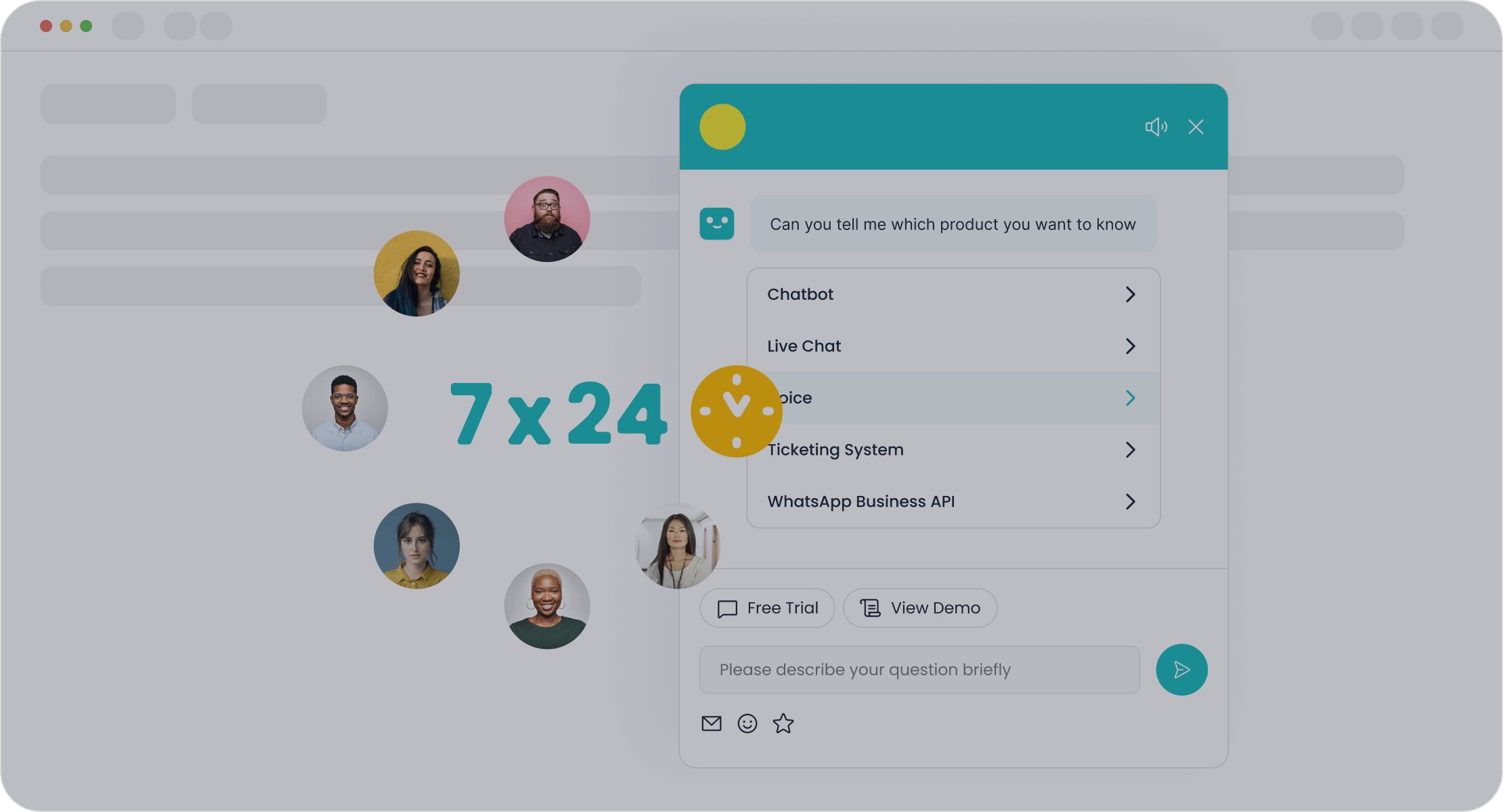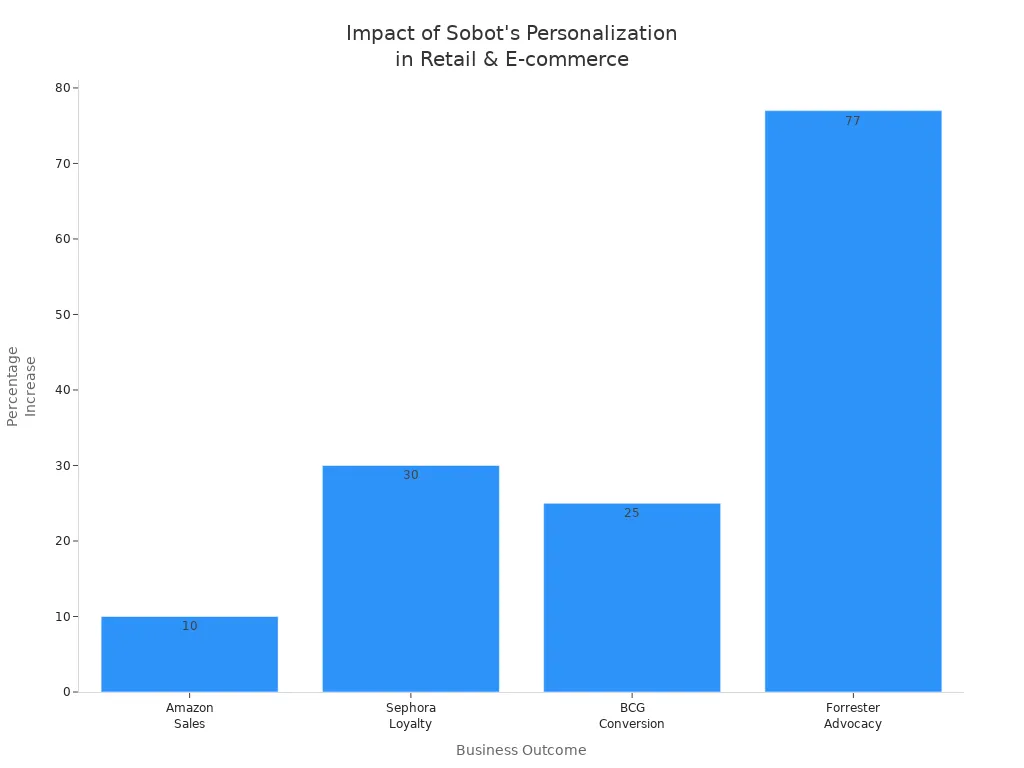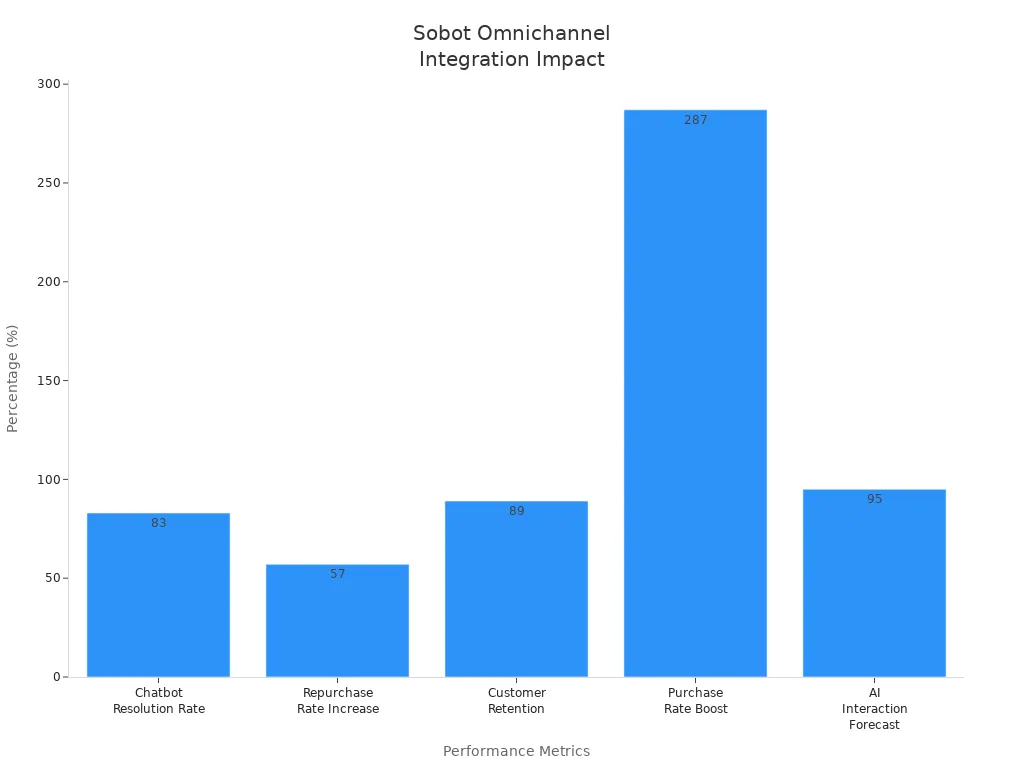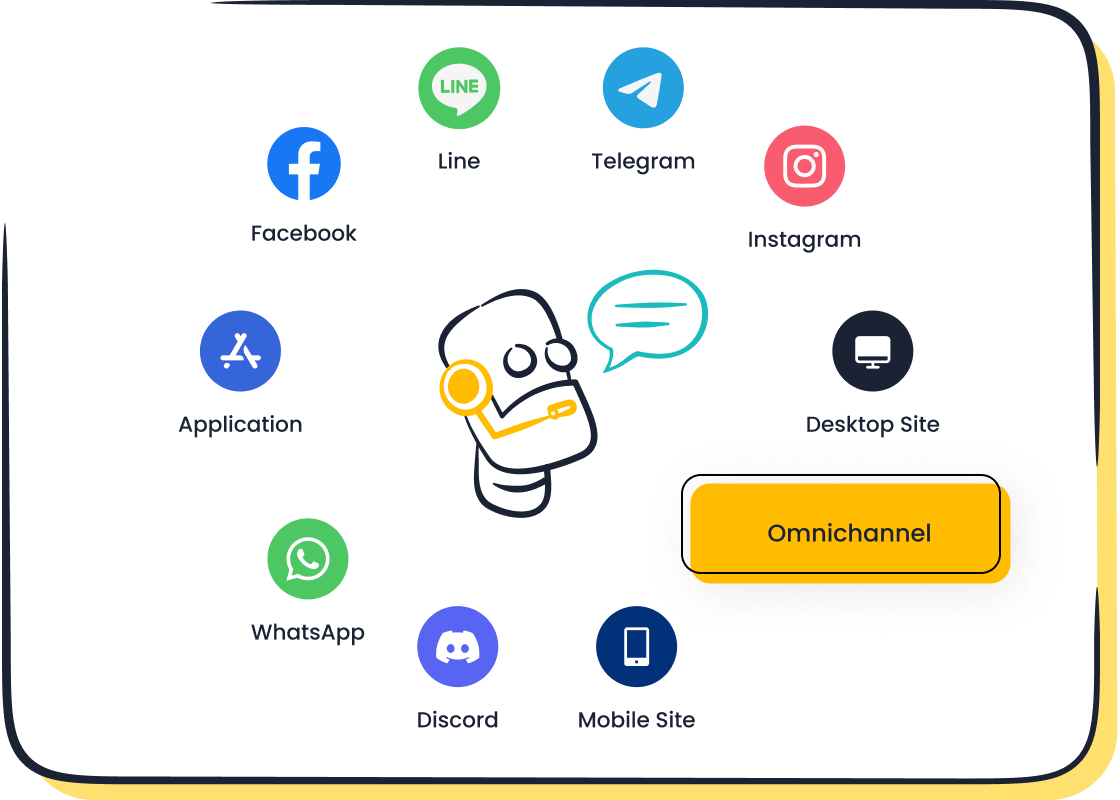Personalized Service Examples and Strategies for Customer Success

Personalized service drives customer success and shapes modern business outcomes.
- 88% of customer experience specialists consider personalization critical for loyalty.
- 80% of consumers prefer brands that offer personalized experiences.
- Businesses using AI-powered personalization see up to 25% revenue growth.
Sobot stands out by blending omnichannel consistency, real-time data analysis, and AI-driven intent recognition. Sobot AI and Sobot call center solutions deliver actionable personalized service examples that help brands improve satisfaction and conversions. Readers should consider if their current customer journey matches these standards.
Personalized Customer Experience

Definition and Importance
A personalized customer experience means tailoring every interaction to fit each customer’s unique preferences, interests, and behaviors. Companies gather data from many touchpoints, such as browsing history, purchase records, app activity, and feedback, to understand what matters most to each person. This approach goes beyond simply addressing customers by name. It adapts product recommendations, support conversations, and even the entire customer journey in real time. When businesses deliver a personalized customer experience, customers feel valued and understood. They gain a sense of control and trust, which reduces stress and disconnect with the brand.
Sobot’s omnichannel solutions make it easy for brands to collect and analyze customer data across channels. This unified view allows agents and AI chatbots to respond with relevant, timely information. For example, Sobot’s AI Chatbot can greet customers by name, suggest products based on past purchases, and answer questions in the customer’s preferred language. These features help companies meet rising expectations for seamless, responsive service.
Tip: Start by mapping the customer journey and identifying key moments where a personalized customer experience can make the biggest impact.
Impact on Customer Success
A personalized customer experience transforms ordinary interactions into memorable moments. Customers who receive tailored service feel appreciated and are more likely to return. Research shows that 81% of customers prefer companies that offer personalized experiences, and 80% are more likely to buy when they receive relevant recommendations (source). Personalization leads to faster problem resolution, builds trust, and encourages repeat business.
Studies confirm that personalized customer experience boosts both satisfaction and loyalty. For example, a telecom company using AI-driven personalization reduced churn rates by 30% and improved customer satisfaction scores. In retail, brands like Michael Kors have seen a 95% satisfaction rate and a 20% increase in conversions after implementing Sobot’s unified platform. These results show that meeting customer needs with a personalized customer experience drives long-term success and higher revenue.
- 97% of marketers report measurable increases in engagement from personalization.
- Personalized customer experience increases customer lifetime value and brand advocacy.
- Consistency across the customer journey, powered by tools like Sobot, ensures every customer feels recognized and valued.
Personalized Service Examples

Sobot in Retail and E-commerce
Retail and e-commerce brands face high expectations for fast, relevant, and seamless customer interactions. Sobot delivers personalized service examples that help these businesses stand out and build lasting relationships. Companies use Sobot’s omnichannel contact center to connect with customers across platforms like Shopify, Amazon, Shopee, and Lazada. This unified approach ensures every shopper receives consistent, tailored support.
- Sobot’s conversational AI engages shoppers at every stage of their journey. Automated messages answer questions, recommend products, and resolve up to 70% of inquiries without human intervention. This automation triples conversion rates for many brands.
- Leading retailers such as SHEIN use Copilot-powered agents to serve both merchants and consumers, while OPPO achieves a 93% customer satisfaction score through conversational support.
- Sobot’s platform routes customers to the right sales agent for one-on-one consultations, ensuring each interaction feels personal and relevant.
- Automated booking management helps brands reduce missed appointments and optimize lead filtering, while timely reminders and targeted offers boost customer loyalty.
- Sobot’s AI capabilities include omnichannel support, scenario-based AI for retail, and generative AI powered by advanced language models. These features guarantee secure, compliant, and highly personalized interactions.
Note: Sobot’s AI-driven platform enables brands to deliver personalized service examples that not only improve efficiency but also create memorable customer experiences.
The impact of these personalized service examples can be seen in measurable business outcomes. The table below highlights how Sobot’s solutions drive success for retail and e-commerce brands:
| Aspect | Evidence | Business Outcome |
|---|---|---|
| Productivity Boost | AI-powered customer service tools increase productivity by up to 400%. | Significant operational efficiency gains. |
| Time Savings | Automation saves up to 2.5 billion hours annually. | Reduced labor costs and faster service. |
| Customer Support Availability | 24/7 AI chatbots and virtual assistants provide continuous support. | Improved customer engagement and satisfaction. |
| Personalized Recommendations | Computer vision and NLP tailor product suggestions. | Increased sales and enhanced shopping experience. |
| Omnichannel Experience | AI agents maintain context across all channels. | Stronger brand loyalty and seamless customer journey. |
Sobot’s personalized service examples have helped brands achieve higher sales, better customer satisfaction, and stronger user retention. For instance, Amazon saw a 10% increase in sales from personalized recommendations, while Sephora improved customer loyalty by 30% using AI-powered suggestions (source). A BCG study found that conversion rates increased by 25% when brands used AI-driven personalization. Forrester reported that 77% of consumers are more likely to recommend brands that offer personalized experiences.

These results show that Sobot’s personalized service examples deliver real value. Brands benefit from increased conversions, higher engagement, and improved customer satisfaction. Sobot’s solutions help companies turn every interaction into an opportunity for growth.
Michael Kors Success Story
Michael Kors, a global leader in luxury fashion, provides one of the most compelling personalized service examples in the industry. The brand partnered with Sobot to transform its customer service and marketing strategies, aiming to deliver instant, relevant, and seamless experiences across all channels.
Michael Kors integrated Sobot’s AI-powered chatbot with the WhatsApp Business API. This allowed the brand to automate routine inquiries and provide instant, personalized responses to customers worldwide. The chatbot handled common questions, while WhatsApp enabled real-time, one-on-one communication. This approach freed support teams to focus on complex issues and strategic tasks.
The results speak for themselves:
| Measurable Result | Description |
|---|---|
| Inventory Efficiency Improvement | Increased by 25% through AI-driven forecasting, reducing overstock and stockouts. |
| Stockouts Reduction | 40% fewer stockouts for key SKUs, improving product availability during peak seasons. |
| Fulfillment Time Reduction | Shorter shipping times due to optimized warehouse distribution and automated replenishment. |
| Conversion Rate Increase | 22% boost in online conversions via AI personalization, especially in accessories and outerwear. |
| Email Engagement Improvement | 30% higher open rates and 18% better click-through rates in personalized campaigns. |
| Customer Retention Enhancement | Increased repeat purchases within 45 days due to personalized recommendations. |
| Return Rate Reduction | 22% fewer returns in eyewear category using virtual try-on technology. |
| Conversion Increase with AR | 15% higher conversion on product pages with augmented reality try-on. |
| Mobile Engagement Growth | Over 25% increase in time spent on mobile product pages with virtual try-on. |
| Excess Inventory Reduction | 30% decrease in surplus inventory through improved forecasting. |
| Carbon Emissions Reduction | 15% lower emissions in key product lines via smarter design and sourcing. |
| Product Discovery Efficiency | 15-20% increase in conversions using AI assistant Shopping Muse, enabling faster relevant finds. |

Michael Kors achieved an 83% reduction in response time and a 95% customer satisfaction rate after implementing Sobot’s unified platform. The integration of CRM and order systems gave agents a complete view of each customer, enabling highly personalized service. The use of WhatsApp API for marketing led to a 20% increase in conversion rates, as customers engaged more with verified business messages.
Sobot’s platform also improved user retention by making every interaction more relevant and timely. Personalized recommendations and targeted offers encouraged repeat purchases and built stronger relationships. Michael Kors saw a 35% increase in Net Promoter Score (NPS), reflecting higher customer loyalty and advocacy.
Tip: Brands can replicate these personalized service examples by unifying customer data, automating routine tasks, and using AI to deliver instant, relevant responses across all channels.
Michael Kors’ story demonstrates how Sobot’s personalized service examples drive measurable improvements in customer satisfaction, operational efficiency, and business growth. These results highlight the power of AI-driven personalization in today’s competitive retail landscape.
Customer Personalization Strategy
Data Collection and Analysis
A strong customer personalization strategy starts with gathering insights into customer preferences. Businesses collect customer data from many sources, such as website visits, purchase history, social media activity, and support interactions. This information helps companies understand what customers want and how they behave. Analyzing data to build customer profiles allows brands to segment audiences and tailor offers to each group.
Companies use several types of customer data to improve their strategies:
- Demographic data shows age, location, and gender.
- Behavioral data tracks browsing habits and abandoned carts.
- Transactional data reveals purchase patterns.
- Feedback data highlights satisfaction and areas for improvement.
- Engagement metrics, like email opens and loyalty program activity, show brand connection.
Most customers (76%) willingly share personal data if it improves their experience. Real-time data analysis lets brands predict needs and deliver timely offers. AI and machine learning help companies adapt messages and recommendations instantly. Mapping the customer journey with big data identifies key moments for impactful personalization. Businesses must also protect privacy and comply with regulations to build trust.
Tip: Use CRM systems to consolidate customer data and create detailed profiles for real-time, personalized interactions.
Omnichannel Integration with Sobot
Sobot’s omnichannel solutions and Chatbot enable businesses to deliver a seamless customer personalization strategy. Sobot integrates customer data from every channel—email, SMS, WhatsApp, live chat, and more—into a single platform. This unified view ensures that agents and AI tools always have up-to-date information about customer preferences.
Sobot’s AI-powered Chatbot uses natural language processing and machine learning to maintain context across conversations. The Chatbot provides human-like responses based on each customer’s history and preferences. By automating routine inquiries and proactively engaging customers, Sobot helps brands deliver consistent, relevant experiences.
| Benefit | Explanation | Supporting Statistic or Insight |
|---|---|---|
| Improved Customer Experience | Unified data enables consistent, valuable interactions across all touchpoints. | 86% of buyers will pay more for better CX; more channels used means higher spending. |
| Enhanced Personalization | Full customer journey view allows true 1:1 personalization. | 91% of consumers prefer brands with relevant offers and recommendations. |
| Customer Retention | Unified data helps identify at-risk customers and engage them proactively. | Retaining a customer costs five times less than acquiring a new one. |
| Operational Efficiency | Data consolidation reduces duplication and streamlines workflows. | Experts agree unified data improves collaboration and efficiency. |
| Proactive Engagement | Data insights allow timely, relevant offers and solutions. | Unified profiles enable proactive engagement. |
Sobot’s platform supports real-time audience segmentation by demographics, behavior, and custom traits. AI-driven marketing tools automate subject lines, A/B testing, and campaign optimization. Businesses using omnichannel AI strategies see up to 89% higher retention and a 287% boost in purchase rates compared to single-channel campaigns.

Sobot’s customer personalization strategy empowers brands to anticipate needs, personalize every interaction, and build lasting loyalty by gathering insights into customer preferences and integrating data across all channels.
Customer Segmentation and Personalization
Segmenting for Relevance
Customer segmentation and personalization help businesses deliver the right message to the right people. Segmenting customers means grouping them based on shared preferences, behaviors, or needs. This process allows companies to understand what makes each group unique and how to serve them better.
Best practices for effective segmentation include:
- Set clear business goals to guide the segmentation process.
- Use a mix of data sources, such as demographic, behavioral, and psychographic information, to get a full picture of customer preferences.
- Build segments that are meaningful and actionable, reflecting real differences in customer needs.
- Test and refine segments regularly to keep up with changing behaviors.
- Connect segmentation with personalization by using tools like AI, CRM, and marketing automation.
Companies often use several methods to segment customers:
- Technographic segmentation groups customers by the devices or software they use, making it easier to match their preferences for communication.
- Behavioral segmentation focuses on actions, such as purchase history or website visits, to spot trends and predict future needs.
- Needs-based segmentation divides customers by their goals or pain points, helping brands offer solutions that fit.
- Customer status segmentation uses lifecycle stages, like new or loyal customers, to tailor engagement.
- Value-based segmentation targets high-value customers with special offers, maximizing return on investment.
Sobot’s platform supports these strategies by unifying customer data and enabling real-time segmentation. This approach ensures every interaction matches the customer’s preferences and stage in the customer journey.
Tip: Regularly review your segments to make sure they reflect current customer preferences and behaviors.
Tailoring Offers and Content
Once segments are defined, businesses can tailor offers and content to meet each group’s preferences. Personalization becomes more effective when companies understand what matters most to each segment.
Best practices for tailoring offers and content include:
- Identify customer pain points and goals by asking targeted questions, then use this insight to create solutions that address specific needs.
- Analyze customer data, such as purchase history and browsing behavior, to deliver personalized recommendations and targeted promotions.
- Design marketing campaigns that speak directly to each segment. For example, highlight sustainability for eco-conscious shoppers or offer exclusive deals to loyal customers.
- Personalize communication channels, including email, social media, and live chat, to build stronger relationships.
- Use customer profiles and past interactions to provide tailored support, increasing satisfaction and loyalty.
Sobot’s AI-powered Chatbot and omnichannel solutions make it easy to deliver personalized marketing and support. The platform uses unified data to send relevant recommendations and messages, ensuring each customer feels valued. For example, a retailer can send a special offer to customers who prefer shopping on mobile, while another segment receives product recommendations based on recent purchases.
Personalized marketing and content lead to higher engagement, improved satisfaction, and increased loyalty. According to industry studies, companies that tailor experiences to customer preferences see up to 20% higher conversion rates and stronger brand loyalty (source).
Personalization works best when businesses combine accurate segmentation with tailored offers, making every step of the customer journey more relevant and rewarding.
Personalized Content and Communication
AI Chatbot for Engagement

AI chatbots have transformed how brands connect with customers. Sobot’s AI Chatbot uses advanced natural language processing to understand customer intent and context. It collects data from websites, apps, and social media, building detailed customer profiles. This allows the chatbot to deliver personalized interactions, such as recommending products based on browsing history or answering questions in real time. Integration with CRM systems ensures that every conversation feels relevant and consistent across channels.
A study by Epsilon found that 80% of consumers are more likely to buy from brands that offer personalized experiences. Sobot’s Chatbot leverages this by delivering relevant content and anticipating customer needs. For example, it can send proactive messages about order status or suggest new products based on past purchases. This approach increases engagement, satisfaction, and loyalty.
The impact of personalized content and communication is clear in leading brands:
| Brand/Example | Personalization Approach | Impact on Customer Engagement and Satisfaction |
|---|---|---|
| Spotify | Push notifications based on listening behavior | Higher app engagement and loyalty |
| Amazon | Product recommendations using omnichannel analytics | Increased conversions and satisfaction |
| McDonald's | Event-triggered emails based on activity | Improved open rates and engagement |
Tip: Brands should design communications based on customer profiles to ensure every message feels personal and timely.
Multilingual and Proactive Messaging
Sobot’s AI Chatbot supports multiple languages, enabling brands to serve global customers without language barriers. The chatbot uses real-time sentiment analysis to understand emotions and respond appropriately, even across different cultures. Proactive messaging allows businesses to engage customers at the right moment, such as sending reminders or special offers triggered by user behavior.
Key features include:
- Multilingual support for instant communication in customers’ native languages.
- Proactive engagement through triggered messages and timely notifications.
- Seamless escalation to human agents for complex issues, maintaining a personal touch.
Balancing automation with human support is essential. Sobot’s platform routes complex queries to live agents, ensuring customers receive empathy and expertise when needed. Brands can optimize this balance by automating routine tasks while empowering human teams to handle sensitive or complicated requests. This hybrid approach increases efficiency, reduces operational complexity, and improves customer satisfaction.
Best Practices and Challenges
Implementation Tips
Successful personalization starts with understanding customer expectations and building a strong foundation of customer data. Leading organizations follow these best practices:
- Leverage AI-driven recommendation engines and predictive analytics to tailor experiences.
- Use customer data platforms (CDPs) to unify information and create a holistic view.
- Start small, then scale strategies as results become clear.
- Maintain transparency and give customers control over their data.
- Humanize communication by addressing customers by name and referencing past purchases.
- Segment customers for marketing messages based on preferences and behavior.
- Offer proactive, custom solutions that anticipate customer needs.
- Implement omnichannel support for consistent experiences across all channels.
- Continuously test and optimize personalization strategies.
Netflix, Amazon, and Spotify have set industry standards by using personalized recommendations to drive engagement and sales (source). Sobot’s omnichannel platform and AI Chatbot help brands deliver these best practices by unifying customer data and automating personalized responses.
Tip: Train agents to complement AI tools and empower them to deliver custom solutions.
Overcoming Data Privacy Concerns
Data privacy remains a top concern for businesses and customers. Companies must protect customer data from unauthorized access and limit collection to what is necessary. Responsible data management builds trust and meets legal requirements such as GDPR and CCPA. Sobot’s solutions support compliance by providing secure data handling and transparent communication.
Key steps to address privacy concerns include:
- Aggregate data to protect individual privacy while gaining insights.
- Ensure third-party vendors have proper consent from customers.
- Limit data sharing to only what is essential.
- Regularly review vendors’ data security practices.
- Maintain transparency and obtain explicit customer consent.
- Educate stakeholders on privacy’s role in building trust.
A privacy-first approach not only meets expectations but also strengthens loyalty. Companies should integrate privacy protections into product design and provide customers with control over their data.
Measuring Personalization Success
Measuring the impact of personalization requires tracking the right metrics. Businesses should monitor:
| Metric | What It Shows |
|---|---|
| Customer Lifetime Value (CLV) | Long-term value of each customer |
| Conversion Rate | Effectiveness of personalized offers |
| Churn Rate | Percentage of customers lost |
| First Response Time | Speed of initial replies |
| Average Ticket Resolution | Efficiency in solving customer issues |
| Customer Retention Rate | Loyalty and satisfaction over time |
| Preferred Communication Channel | Customer interaction preferences |
Tracking these metrics before and after implementing personalization strategies helps organizations understand what works. Sobot’s analytics tools provide real-time insights, enabling continuous improvement. Businesses can use A/B testing and feedback loops to refine their approach and better meet customer needs.
Note: Continuous data analysis and feedback collection are essential for optimizing personalization and exceeding customer expectations.
- Over 70% of customers expect a personalized customer experience, which increases engagement, satisfaction, and loyalty.
- Personalization drives revenue growth by up to 25% and gives brands a competitive edge.
- Sobot’s AI-powered solutions help organizations unify channels, automate support, and improve user retention.
- Companies can start by integrating Sobot’s platform, using analytics, and customizing workflows.
Discover how Sobot’s innovative approach to customer-centricity can transform your business. Visit Sobot’s website to request a demo and begin your journey toward smarter, more personalized service.
FAQ
What are some real-world personalized service examples that drive customer success?
Sobot’s work with Michael Kors shows strong results. The brand achieved an 83% reduction in response time and a 20% increase in conversions. These personalized service examples highlight how tailored support and unified channels boost customer success and satisfaction.
How does a personalized customer experience improve loyalty?
A personalized customer experience makes each person feel valued. According to Salesforce, 80% of customers are more likely to buy from brands that offer personalization. Sobot’s omnichannel solutions help brands build loyalty by delivering relevant, timely interactions.
What steps create an effective customer personalization strategy?
Start with unified data collection. Use AI tools like Sobot’s Chatbot to analyze behavior and preferences. Segment customers, then tailor offers and communication. Test and optimize regularly. This approach ensures the customer personalization strategy delivers measurable results.
Can Sobot’s AI Chatbot support multilingual personalized service examples?
Yes. Sobot’s AI Chatbot supports over 30 languages. It delivers personalized service examples by answering questions, recommending products, and sending proactive messages in each customer’s preferred language. This feature helps brands reach global audiences and improve customer success.
How can companies measure the impact of personalized service examples?
Companies track metrics such as customer satisfaction (CSAT), Net Promoter Score (NPS), conversion rates, and response times. Sobot’s analytics tools provide real-time insights. Brands using Sobot often see a 95% satisfaction rate and a 35% increase in NPS, proving the value of personalized service examples.
See Also
Enhance SaaS Customer Support Using Live Chat Techniques
Top Ten Ways To Improve Customer Satisfaction Via Live Chat
How AI Service Agents Are Transforming Customer Support
